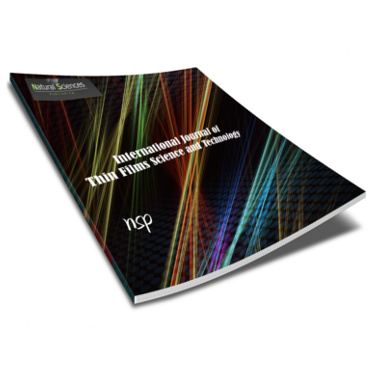International Journal of Thin Film Science and Technology

Sputtering Parameters Influence on the as Deposited PZT Thin Films: Surface Roughness and Morphology
Abstract
A homemade target of Pb (Zr0.48, Ti0.52) O3 is sputtered out under different conditions of power and Argon pressure on platinized silicon substrates, however, the distance inter-electrodes and time of growth were fixed. The deposition is running at room temperature. The surface morphology and roughness formed depend strongly on the input power and working pressure. When the argon (Ar) pressure is set to 2 pa, at 100 W of input power we observe bubbles due to low energy nucleation on the substrate, at 150 W we obtained more dens surface, at 200 W the sputtered particles from the target has more energy, therefore, we observe the impact of a collision on the surface. When the working pressure of Ar is set to 3 pa the surface contains large grains, at 150 W we observe the presence of holes, and at 200 W high roughness surface is obtained. The optimum conditions are 2 pa with 150 W of input power. New samples are prepared in the optimum conditions of 2 pa and 150 W during 2 h of sputtering the thickness measured by the tilting image of a scanning electronic microscope (SEM) is 300 nm. Then, conventional annealing at 650 °C, for 1 h. The XRD pattern shows polycrystalline microstructure with preferred orientation on (300) and (110) the measured average roughness by atomic force microscopy (AFM) is 38 to 45 nm. The ferroelectric measurement shows a hysteresis loop.
Recommended Citation
Mahdi, Mohammed; Kadri, Mohamed; Henni, Laid; and Mustapha, Hamici
(2022)
"Sputtering Parameters Influence on the as Deposited PZT Thin Films: Surface Roughness and Morphology,"
International Journal of Thin Film Science and Technology: Vol. 11
:
Iss.
2
, PP -.
Available at:
https://digitalcommons.aaru.edu.jo/ijtfst/vol11/iss2/5

